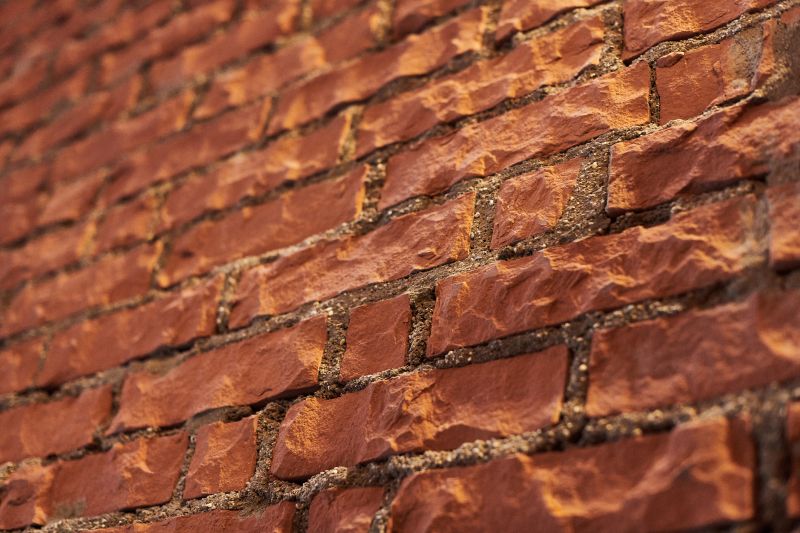Favorite Brick Staining Products For Easy Application and Results
Select from popular solutions designed for straightforward use and consistent, high-quality finishes.
 Products designed for brick stainings encompass a broad range of solutions tailored to enhance, restore, or alter the appearance of brick surfaces. These products include specialized stains, paints, sealers, and cleaning agents that can be used to achieve various aesthetic effects or to prepare bricks for further treatment. Selecting the appropriate product depends on the specific project goals, whether it is to add color, protect the brickwork, or remove previous stains.
Products designed for brick stainings encompass a broad range of solutions tailored to enhance, restore, or alter the appearance of brick surfaces. These products include specialized stains, paints, sealers, and cleaning agents that can be used to achieve various aesthetic effects or to prepare bricks for further treatment. Selecting the appropriate product depends on the specific project goals, whether it is to add color, protect the brickwork, or remove previous stains.
Top Overall Option
Universal Brick Stain
The Universal Brick Stain is a versatile and user-friendly product designed to work on various brick surfaces. It offers a semi-transparent finish that enhances the natural texture while adding a subtle color tint. Its easy application process makes it suitable for both professionals and DIYers seeking consistent results across different projects.
Types of Products For Brick Stainings
Water-Based Brick Stains
These stains are easy to apply and clean up, offering a range of colors with minimal odor. Suitable for interior and exterior use, they penetrate the brick surface for a natural look.
Oil-Based Brick Stains
Known for their durability and rich color payoff, oil-based stains are ideal for outdoor projects where weather resistance is important.
Acrylic Masonry Paints
These paints provide a solid, opaque finish that can completely change the appearance of bricks, often used for decorative or protective purposes.
Transparent Sealers
Designed to protect stained bricks from moisture and dirt, sealers help preserve the color and texture over time.
Brick Cleaning Solutions
Specialized cleaners that remove dirt, efflorescence, or previous stains to prepare the surface for new staining or finishing.
Acid-Based Washes
Used for deep cleaning or lightening brick surfaces, these products require careful handling and application.
Lime Wash
A traditional finish that provides a matte, chalky appearance, often used for restoration and historical projects.
Polyurethane Coatings
Offers a protective layer that enhances durability and resistance to scratching or weathering.
Epoxy Coatings
Highly durable coatings suitable for high-traffic areas or industrial applications, providing a glossy finish.
Tinted Sealers
Sealers with added color to subtly enhance or modify the appearance of stained bricks.
Chalk-Based Stains
Offer a matte, soft finish with a chalky texture, often used for decorative effects.
Mineral-Based Stains
Natural mineral stains provide color and texture without synthetic additives, suitable for restoration projects.
Popular Choices
A favored choice for its ease of use and low odor, suitable for various brick surfaces and projects.
Known for its durability and rich coloration, often selected for outdoor applications.
Provides opaque coverage with vibrant colors, popular for decorative transformations.
Commonly used to protect and extend the life of stained bricks, maintaining appearance over time.
Essential for preparing surfaces to ensure optimal stain adhesion and appearance.
Used for deep cleaning or lightening bricks, especially in restoration projects.
Offers a traditional, matte finish that enhances historic or rustic brick aesthetics.
Popular for providing a durable, protective layer on stained brick surfaces.
Chosen for high durability and glossy finish in industrial or high-traffic areas.
Enhance the visual appeal with subtle color modifications while protecting the surface.
Selected for decorative projects aiming for a soft, matte finish.
Preferred in restoration for their natural appearance and compatibility with historic bricks.
Brick staining products are formulated to penetrate the porous surface of bricks, offering a durable finish that can resist weathering and aging. Some products are designed for new construction projects, providing a uniform color or texture, while others are suitable for restoration work, helping to cover up discoloration or previous stains. Many options are available for different types of brick, including traditional clay, concrete, or manufactured brick veneers.
When choosing a product for brick staining, it is important to consider the existing condition of the brick, the desired color or effect, and the level of durability required. Proper surface preparation, such as cleaning and priming, can significantly influence the outcome. Application methods vary from brush and roller to spray, depending on the product formulation and project scale. Additionally, some products include protective sealers to enhance longevity and maintain appearance over time.
Overall, the market offers a diverse selection of products suited for both professionals and DIY enthusiasts. Whether aiming for a subtle enhancement or a bold transformation, understanding the properties and compatibility of different products can help achieve the desired results while maintaining the integrity of the brick surface.
Key Buying Considerations
- Compatibility with brick type and existing surface conditions
- Desired finish appearance, such as matte, gloss, or semi-transparent
- Application method suitability, whether brush, roller, or spray
- Durability and weather resistance for exterior projects
- Ease of application and cleanup process
- Color options and ability to achieve specific aesthetic goals
- Protection features like sealing or waterproofing
- Compatibility with other coatings or treatments planned for the surface
- Drying time and curing process to fit project timelines
- Level of surface preparation required before application
- Resistance to efflorescence, dirt, and staining over time
- Environmental conditions during application, such as humidity and temperature
- Long-term maintenance requirements and reapplication frequency
- Product safety and handling instructions
- Cost considerations relative to project scope and quality expectations
